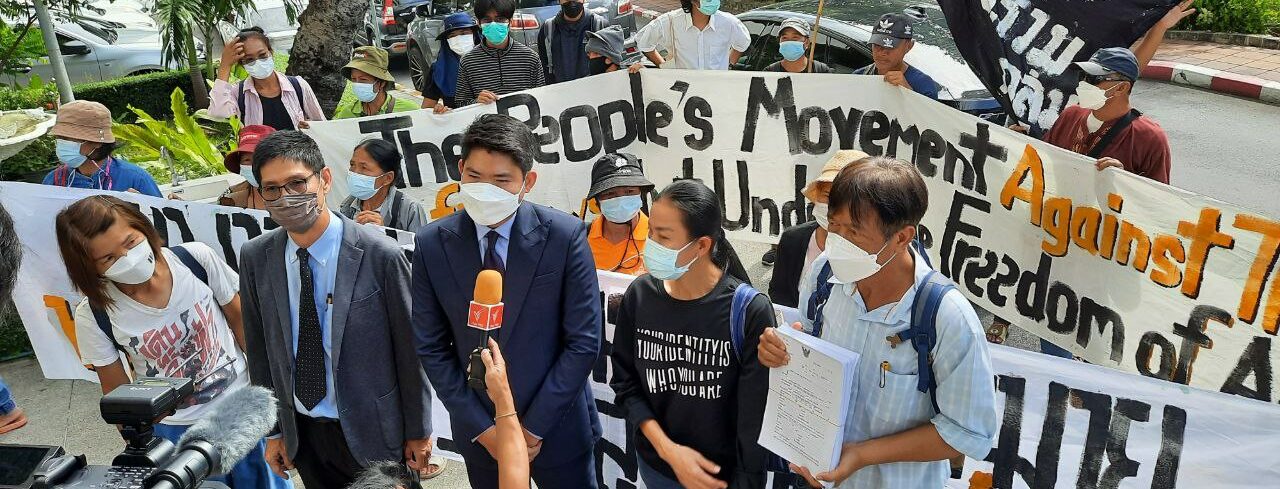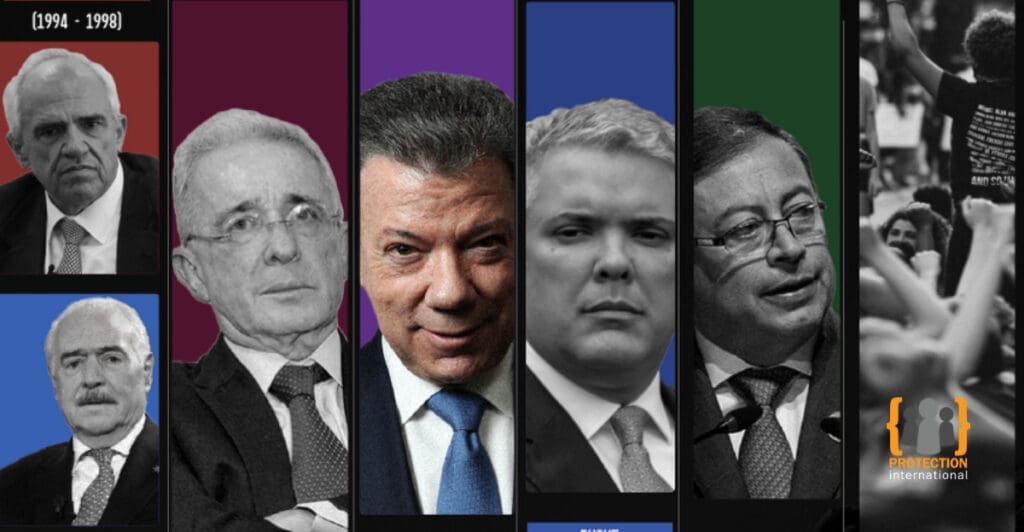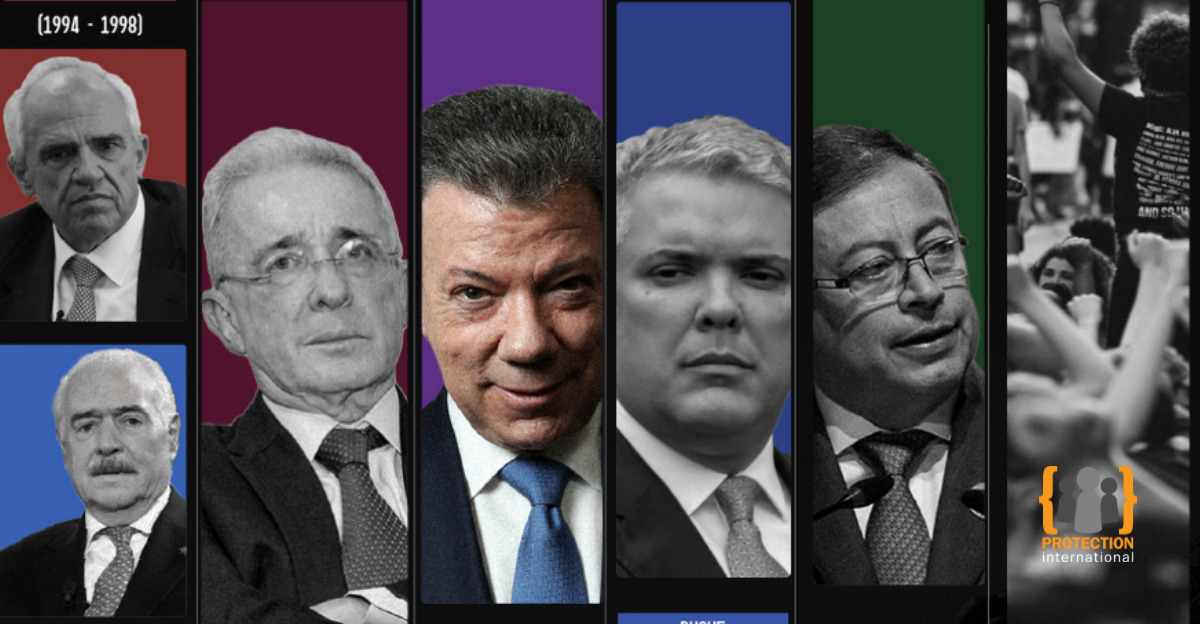It has been 25 years since the first protection mechanism for people at risk due to armed conflict (December 1997) was introduced. This law is the first national policy worldwide applicable to the protection of human rights defenders. For this occasion, Protection International (PI) produced this infographic, compiling the existing national regulations concerning the protection of human rights defenders in Colombia. The regulations are presented in a timeline and are grouped by presidential terms.
This work also highlights the main risks faced by human rights defenders and social leaders during these 25 years, and the continuous lack of effective protection of the right to defend human rights in Colombia. Although the objective of this legislative framework has been to counteract aggressions against human rights defenders, we wonder: have they been useful? Have they been sufficient? And have they contributed to guaranteeing life and the right to defend human rights?
Beyond the figures documented in the timeline and the physical and direct aggressions that represent the most critically expression of this risks, we have been able to identify a growing deterioration of civic space during the past 25 years. This deterioration has manifested itself through numerous attacks, not only on the life and integrity of defenders, but also on collective rights such as freedom of association, expression, assembly and demonstration, which are essential preconditions for defending rights.
Protection International recognises the efforts made through the creation of laws and decrees for the protection of human rights defenders. However, these have had no significant impact on the ongoing risks and threats against human rights defenders, nor on the full and secure protection of the right to defend human rights.
Has this body of law contributed to reduces the risks related right to defend the human rights of human rights defenders in Colombia?
The number of regulations related to the protection of human rights defenders, activists and social leaders has increased significantly in the last 25 years, thanks to the work and pressure of civil society. Currently, there exists a wide range of legislative documents (including decrees, laws and directives), which together establish the creation and regulation of entities, bodies, mechanisms and protection programmes at the individual level, as well as some progress on the subject of collective protection and gender.
Unfortunately, despite these efforts, the impact of these norms is not reflected in an effective protection of the right to defend human rights in Colombia, and the situation for human rights defenders continues to be critical.
This systematic review allowed us to reach some conclusions:
- Attacks on people and their right to defend human rights persist and increase. Leaders who defend the right to land, territory and the environment; who have promoted the Colombian peace process and have accompanied the victims of the armed conflict; who promote processes of social and community strengthening, have gone down in history as the most attacked groups of defenders during the past 25 years. The number of aggressions against indigenous leaders, peasants and women defenders has continued to increase. Threats remain the most common tactic used to intimidate human rights defenders.
- Problems in the design and implementation of public protection and guarantee policies.
- Political will: we have noted the lack of political will from past and current Colombian governments to implement regulations. Their implementation should be a central element to ensure the effectiveness of protection policies.
- Design of public policies: we found that there has been limited participation of human rights defenders in the formulation of public policy, especially rural defenders.
- Gaps in the implementation of public policies: we identified little progress in terms of collective protection, difficulties in the implementation of the differential, gender and intersectional approach, as well as weaknesses or absence of a theory of change, objectives and indicators to measure public policies and their impact on the right to defend human rights. Corruption and a strong lack of institutional coordination have also been important barriers to the effective implementation of policies.
Protection International hopes that this infographic will provide a useful overview of the Colombian legal framework for the protection of human rights defenders over the past 25 years. We hope it can be used as a basis for a critical assessment of the impact of protection policies overtime on the risks and the right to defend human rights in Colombia.
Find out all the details on the publication in Spanish or French, and visit the web special only available in Spanish. The analysis is only published in Spanish.
See related content in our Observatory on Public Policies for Human Rights Defenders – FOCUS.



